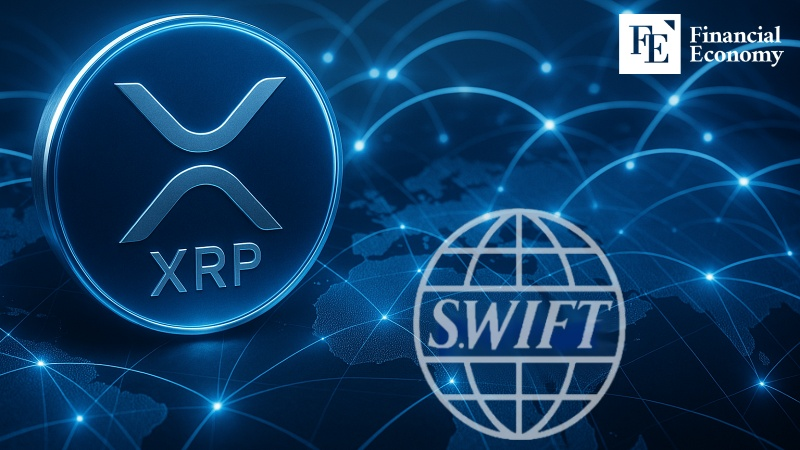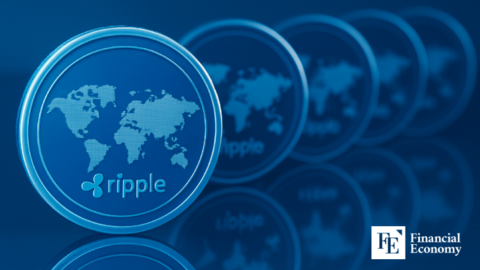Ripple Rises as a ‘Post-SWIFT’ Contender, Could It Reshape the Global Remittance Market?
Input
Changed
Expanding Its Global Payment Presence
Building Real-World Transaction Networks with Stablecoins
“We Must Distinguish Technological Progress from Practical Reality”

The cryptocurrency Ripple (XRP) is rapidly expanding its ecosystem as it positions itself as an alternative to the traditional global payment network, SWIFT (Society for Worldwide Interbank Financial Telecommunication), in the international remittance market. With Ripple accelerating its push to establish a real-world transaction base through the issuance of its own stablecoin, some observers are predicting that Ripple could either replace SWIFT or coexist alongside it as a parallel system. However, prevailing sentiment in the market suggests that a full-scale transition in the near term is unlikely, given SWIFT’s entrenched global financial infrastructure, its deep-rooted credibility, and the complex regulatory environments across different countries.
Accelerating Growth with an Eye on the Global Remittance Market
As of July 21 (local time), data from cryptocurrency platform CoinMarketCap showed Ripple’s market capitalization at approximately USD 31 billion, ranking it seventh among all cryptocurrencies, with a 24-hour trading volume exceeding USD 1 billion. Ripple has expanded its payment network through partnerships with traditional financial institutions, setting itself apart from typical cryptocurrencies by positioning itself as a practical payment infrastructure. This strategy—distinct from the speculative nature of many past cryptocurrencies—has fueled expectations that Ripple could emerge as a mainstream payment option.
Ripple aims to resolve the inefficiencies of the current SWIFT-based international remittance system by positioning itself as a digital asset capable of real-time settlement and payments. With a vision to enable cross-border transfers without the involvement of central banks or intermediary institutions, Ripple hopes to introduce a new dynamic to the global financial market. Currently, Ripple operates remittance services based on its RippleNet network in countries such as Japan, the United Arab Emirates, and the Philippines, and has forged partnerships with several banks. As these technological efforts to bypass the traditional closed infrastructure of the financial sector yield tangible results, Ripple is increasingly being recognized as a viable real-world payment solution.
Strategic moves by Ripple’s issuing entity, Ripple Labs, have also been a key driver of its expansion. Ripple Labs is working to build a payment network that can interoperate with central bank digital currencies (CBDCs), expanding its collaboration channels with international organizations and governments. One example is its pilot project with the Royal Monetary Authority of Bhutan, which seeks to link the country’s CBDC to a payment network based on XRP. At the same time, Ripple Labs is enhancing technical compatibility by expanding its open-source initiatives and bolstering its legal advisory capacity to navigate financial regulations. This multifaceted approach is playing a critical role in elevating Ripple from a mere cryptocurrency to a “trusted payment infrastructure.”
According to market research firm TokenPost, the global remittance market targeted by Ripple is estimated at USD 21 trillion. The firm projected that even capturing a 5% share of this market could multiply Ripple’s market capitalization several times over. The launch of Ripple’s institutional payment solution, the Ripple Liquidity Hub, is seen as a signal that the company is making a serious bid to penetrate the market. Analysts also note that maintaining a stable circulation volume of XRP helps reduce volatility risks, reinforcing Ripple’s strategy.
Ripple Expands Its Ecosystem — A Potential Challenger to SWIFT
As Ripple’s influence within global payment networks continues to grow, speculation has emerged over its potential to replace the SWIFT system. According to Blockmedia, “Ripple is seeking to transform existing international remittance networks by leveraging its proprietary stablecoin, RLUSD,” adding that “the conclusion of Ripple’s long-standing legal battle with the U.S. Securities and Exchange Commission (SEC) has paved the way for the company to expand its footprint within the regulated financial system.” Just as SWIFT once served as a backbone of the global financial network, Ripple is now drawing attention as a digital-era alternative payment infrastructure.
RLUSD, a dollar-pegged stablecoin, has garnered market interest thanks to its low price volatility and structure optimized for international transactions. Ripple has built a test network designed to process cross-border payments between countries outside the United States in real time using RLUSD, and real-world applications of the coin are gradually expanding in regions such as Southeast Asia, the Middle East, and Africa. In these markets—where financial infrastructure remains underdeveloped—Ripple aims to position RLUSD as a practical solution that simplifies procedures, reduces fees, and enables real-time settlement, thereby addressing some of the inefficiencies of the SWIFT-based system.
Brad Garlinghouse, CEO of Ripple Labs, has also highlighted that Ripple’s RLUSD-centered remittance solution is faster and more efficient than traditional systems, stating, “We will work with legacy financial institutions to establish a new global financial standard.” While he stopped short of explicitly declaring a bid to replace SWIFT, his remarks are widely seen as part of a broader strategy aimed at competing with the existing financial infrastructure. As a result, the full-scale deployment of RLUSD is expected to serve as a critical proving ground for Ripple’s ecosystem expansion and a launchpad for strengthening its presence in the ongoing contest for global financial dominance.

Gaps Remain with SWIFT in Infrastructure, Regulation, and Trust
Despite Ripple’s ongoing expansion, the prevailing view in the market is that it would be difficult for Ripple to replace the existing SWIFT network in the short term. SWIFT operates the world’s largest financial messaging system, connecting over 10,000 financial institutions in more than 200 countries. Its infrastructure has undergone repeated regulatory coordination and stability checks at the international level. In contrast, while Ripple touts its technological strengths and fast transaction speeds, many believe it still lags behind in terms of global trust and regulatory acceptance.
Moreover, Ripple’s system would have to meet a complex set of requirements—including inter-central bank cooperation, monetary policy execution, and anti-money laundering compliance—which presents significant barriers to competing directly with the established system. Whereas financial regulators prioritize SWIFT’s security and standardization, Ripple focuses on technological innovation, making their underlying structures fundamentally different. This disparity highlights the fact that Ripple remains unproven when it comes to multi-layered functions such as foreign exchange management and risk mitigation, beyond simple remittance services.
Additionally, Ripple Labs’ global rollout strategy for RLUSD is still largely considered experimental. Although pilot tests are underway with select partner banks, the stablecoin’s full-scale distribution remains limited in regulatory-heavy markets like North America and Europe. Since the inclusion of RLUSD in any remittance network would require explicit regulatory approval, expanding it into a practical payment infrastructure will necessitate close cooperation with national governments.
Given these factors, many analysts believe Ripple is more likely to pursue a path of complementing or operating alongside existing infrastructure rather than attempting a wholesale replacement of SWIFT. In practice, Ripple has been gradually expanding its partnerships with traditional financial institutions and applying its remittance solutions in real-world transactions—making a dual-operation model the most realistic short-term scenario. Such a hybrid approach could serve not just as a transitional phase but as a practical bridgehead for shifting the global payments system, especially when considering structural constraints like varying national regulations and disparate financial infrastructures.





















